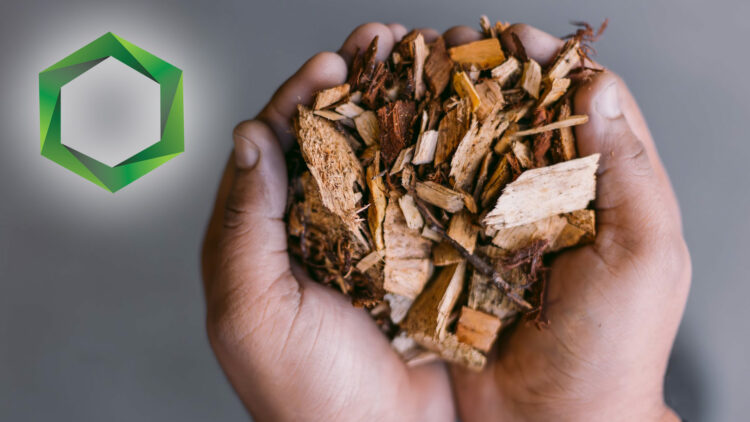CarbonScape, a New Zealand-based company, has announced a breakthrough investment in a patented process that could revolutionize the electric vehicle (EV) battery industry. Traditional graphite production, which is a key component of lithium-ion batteries, is a major source of CO2 emissions. CarbonScape aims to change this with its carbon-negative alternative called biographite.
With an investment of just $18 million, CarbonScape plans to commercialize biographite and establish full-scale production facilities in Europe and the USA. The company claims that biographite can reduce the carbon footprint of each battery by 30%. This sustainable material is made from timber and forestry industry by-products, such as wood chips, using CarbonScape’s seven-year-developed patented process.
The significance of biographite goes beyond the battery sector. As the demand for batteries and renewable energy systems increases, there is a projected global supply deficit of 777,000 tonnes of graphite by 2030. CarbonScape’s sustainable process could meet half of this demand while utilizing less than 5% of the forestry industry by-products generated annually in Europe and North America.
Biographite production can be localized near EV and battery manufacturing hubs, creating more efficient and secure supply chains. This reduces geopolitical risk and the need for higher fossil fuel consumption and emissions associated with synthetic graphite or mined graphite production.
The $18 million investment in CarbonScape is supported by strategic partnerships with industry leaders such as Stora Enso, a provider of renewable products, and ATL, a global innovator in lithium-ion batteries. The commercialization of biographite is seen as a pivotal moment in the transition to a cleaner and more sustainable energy future.
CarbonScape’s CEO, Ivan Williams, believes that biographite can enable the establishment of localized battery supply chains and contribute to mass electrification. By potentially cutting the carbon footprint of each battery by almost a third, biographite could lead to sector-wide emission reductions exceeding 86 million tonnes of CO2 per year by 2030.
In conclusion, CarbonScape’s investment in biographite could significantly transform the EV battery industry. With its carbon-negative properties and sustainable production process, biographite offers a cleaner and more competitive alternative to traditional graphite. This innovation has the potential to reduce CO2 emissions, secure a stable supply of graphite, and support the transition to a sustainable energy future.
Future EV Batteries Aim to Consist of 50% Biographite
Introduction:
The rise of electric vehicles (EVs) has ushered in a new era in transportation, offering a sustainable and efficient alternative to traditional internal combustion engine vehicles. However, one of the key challenges in the widespread adoption of EVs has been the development of advanced battery technology that can offer enhanced energy storage capacity, longer driving ranges, and increased longevity. In recent years, researchers and scientists have been exploring various avenues to overcome these limitations. One promising avenue includes the integration of biographite as a significant component of future EV batteries, with the hope of achieving a 50% composition.
What is Biographite?
Biographite is a newly developed carbon-based material that exhibits exceptional electrical conducting and storage properties. It is derived from biomass, such as agricultural and forestry waste, through a process of carbonization and activation. The resulting material possesses a unique nanoporous structure, providing a large surface area for the adsorption and desorption of lithium ions. This makes it an ideal candidate for integration into next-generation EV batteries.
Advantages of Biographite in EV Batteries:
1. Energy Storage Capacity: One of the primary challenges in EV battery design is the need to store a significant amount of energy to enable long-distance travel. Incorporating biographite into battery electrodes increases their capacity to store and release energy efficiently. This can result in extended driving ranges for EVs, reducing the range anxiety typically associated with electric vehicles.
2. Fast Charging and Discharging: Biographite’s high surface area and porous structure enable rapid lithium ion diffusion, allowing for faster charging and discharging times. This can revolutionize EV charging infrastructure, making it more convenient and comparable to refueling internal combustion engine vehicles.
3. Longer Battery Lifespan: Biographite’s unique structure not only facilitates superior energy storage but also provides enhanced stability and durability. This can lead to longer battery lifespan, reducing the need for frequent replacements and contributing to overall cost-effectiveness and sustainability of EV ownership.
4. Environmental Impact Reduction: As biographite is derived from biomass waste, it offers a more sustainable alternative to conventional graphite, which requires energy-intensive mining and processing. By using biomass resources that would otherwise be wasted, the incorporation of biographite brings environmental benefits by reducing greenhouse gas emissions and waste accumulation.
Current Progress and Challenges:
Researchers and battery manufacturers have shown substantial interest in the potential of biographite for EV batteries. Several studies have demonstrated its superior performance in laboratory settings, highlighting its advantages in energy density, cycling stability, and rate capability. However, there are still significant challenges to overcome before the widespread commercial adoption of biographite-based EV batteries.
One challenge lies in optimizing the synthesis and production processes to ensure scalability and cost-effectiveness. Additionally, further research is needed to address the potential degradation of biographite electrodes over extended use and to enhance safety measures in battery design.
Conclusion:
The integration of biographite into future EV batteries holds tremendous promise for transforming the electric vehicle industry. The combination of its energy storage capacity, fast charging capabilities, extended lifespan, and environmental benefits make it a viable and sustainable option for the next generation of EV batteries. As research and development continue, it is expected that the goal of achieving 50% biographite composition in EV batteries will be realized, driving the electric vehicle revolution forward and creating a greener and more efficient transportation system.

